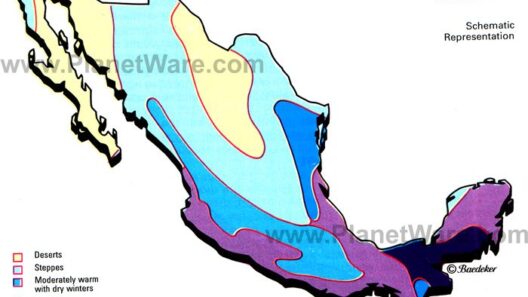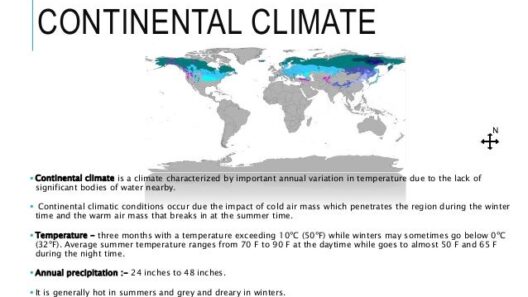Uruguay, a small yet captivating nation nestled between Brazil and Argentina, boasts a climate that has garnered the interest of many, including environmental activists and climate enthusiasts. Its geographical positioning in South America situates it in the temperate zone, characterized by a range of climatic nuances that make it an intriguing subject for climate study. This essay delves into the particulars of Uruguay’s climate, exploring its mild weather patterns, seasonal variations, and the underlying factors that contribute to its distinctive environmental profile.
The country experiences a predominantly temperate climate, with the Atlantic Ocean playing a pivotal role in regulating its weather. This maritime influence brings a level of humidity and moderates temperature extremes, resulting in a generally mild experience throughout the year. Coastal areas, such as Montevideo and Punta del Este, enjoy significantly milder winters compared to inland regions, where temperatures can drop considerably.
Uruguay’s climate is fundamentally divided into four distinct seasons—spring, summer, autumn, and winter—each bringing its own unique characteristics. Spring, spanning from September to November, is a period of renewal. During these months, flora bursts into bloom and the weather grows increasingly warm and sunny. Temperatures typically range from 15°C to 25°C (59°F to 77°F), making it an ideal time for outdoor activities and agricultural cultivation.
Summer, which lasts from December to February, can see temperatures rise significantly. Average daily maximum temperatures hover around 28°C (82°F), though heat waves can send mercury soaring above 35°C (95°F) on occasion. Coastal breezes offer relief, attracting locals and tourists to the beaches, where the Atlantic offers a refreshing respite. However, the summer months can also bring sporadic thunderstorms, characteristic of the subtropical climate influences that overlap in the region.
As summer gradually yields to autumn, from March to May, Uruguay transitions toward cooler temperatures. This season is generally marked by a gradual decline in temperature, with averages falling between 15°C and 25°C (59°F to 77°F) once again. The lush autumn foliage creates picturesque landscapes, enticing nature lovers and photographers alike. It also signals the beginning of the harvest season, crucial for Uruguay’s agricultural economy which is fondly known for its high-quality fruits and vegetables.
Winter, spanning from June to August, represents a time of mild temperatures where conditions remain relatively temperate. Average monthly temperatures fluctuate between 8°C and 15°C (46°F to 59°F). While occasional cold fronts may introduce chillier spells, snow is an exceedingly rare phenomenon, primarily confined to highland regions. This mild winter environment allows for year-round outdoor pursuits and contributes to the overall appeal of Uruguay as a vibrant place to reside.
One cannot discuss Uruguay’s climate without acknowledging its significant precipitation patterns. The country experiences a relatively even distribution of rainfall throughout the year, averaging between 800 mm to 1,300 mm (31 to 51 inches) annually. Although rain can occur unexpectedly, it typically brings much-needed moisture to the arid landscapes, fostering rich biodiversity. The environmentally conscious should consider how consistent precipitation supports the sustainability of agriculture, helping to maintain Uruguay’s status as a global leader in livestock and crop exports.
The interplay of geographical features and climatic influences creates a distinctive ecological tapestry within Uruguay. The country boasts diverse biomes, ranging from coastal wetlands to rolling plains and temperate forests. Each of these ecosystems is uniquely adapted to the precincts of Uruguay’s climate, promoting an array of plant and animal species that thrive in diverse habitats.
Notably, the phenomenon of “El Niño” often has a pronounced impact on the climate in Uruguay. This complex climatic event results in fluctuations in sea surface temperatures in the Pacific Ocean, influencing weather patterns globally. It can tender periods of heightened rainfall or drought, requiring adaptability from Uruguayan farmers and communities alike. Understanding these variations is essential for proactive environmental management to mitigate adverse impacts on agriculture and biodiversity.
The urban populace is increasingly becoming aware of climate change and its ramifications. As the global climate continues to shift, Uruguay faces challenges such as rising sea levels and altered precipitation patterns that could impact both agriculture and living conditions. The proactive observance of these trends offers opportunities for sustainability initiatives, particularly in renewable energy and conservation projects. With a keen emphasis on eco-friendly practices, Uruguay is making strides toward reducing its carbon footprint while preserving its unique ecological treasures.
In conclusion, the climate of Uruguay is a fascinating subject reflective of both its geographical benefits and challenges. With a temperate climate marked by mild weather and seasonal variance, it supports vibrant communities and diverse ecosystems. As environmental scholars, activists, and citizens continue to engage with the realities of climate change, understanding the intricacies of Uruguay’s climate becomes vital. By fostering sustainable practices and resilience, Uruguay can work to preserve its enchanting landscape for generations to come.








